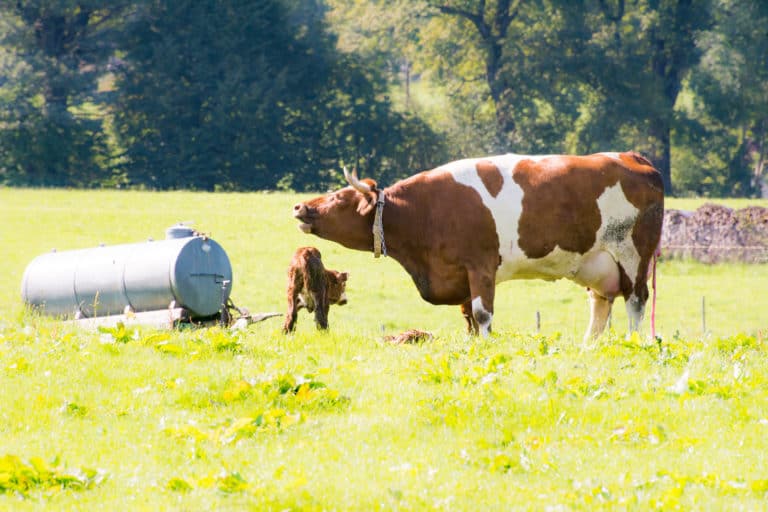Here are a few check points, food for thought!
If the calf is not breathing directly after birth, remove as much mucous from the nostril area. Most of us find a piece of straw and tickle the nostril passageway. This usually does the trick. If not, try pouring cold water over the calf’s head to stimulate a natural stimulation, make sure the calves head is facing down if you try this method.
Disinfect the navel area by dipping the entire navel area so it is saturated. Try to maintain a high level of sanitation in the maternity pen to avoid contamination that can introduce navel infection/contamination.
Rub the calf vigorously with a towel, this will generate heat throughout the body.
Getting colostrum into the calf within 1 hour after birth is the Gold Standard. Feed close to body temperature as possible (104 degrees F) 1 gallon for larger breeds and ¾ gallon for smaller breeds or preemies. Calf mortality increases rapidly if the calf fails to get this first feeding of colostrum within the first 4 hours.
Vaccinate the calf if this is in your normal protocol. Some vaccines need to be done before colostrum is fed. Follow proper recommendations on the label and your Veterinarians recommendation.
In winter months, make sure hypothermia is minimal, remove calf from maternity pen as soon as possible when temperatures fall under 30 degrees F, again rub calf vigorously and place calf in a warmer or warm room. Do not place a calf jacket on a wet calf, this will keep the jacket damp and create more of a negative thermal zone and cause the calf to use more energy to warm it’s body temperature.
Part #2 Limited Immunity:
Calves are born with no immunity, unlike humans. This is why colostrum feeding ASAP is so critical. If we fail to get adequate colostrum into a calf and make sure it is clean colostrum, free of bacteria loads, this may cause an onset of scours or even death.
Bacteria (e,coli salmonella) in colostrum is competing with good IgG’s (immunity) for absorption sights. Bacteria seems to swim faster than good IgG’s and typically win to lock any receptacle absorption sights left open. Whichever bacteria reached there first will invade the calf’s gut and cause damage.
Ensure that the calf gets adequate colostrum, measure and and continue to measure your colostrum. By measure, I mean checking bacteria loads in your maternal colostrum, refractometer reading of your colostrum and Total Protein scores from the calf to measure how they are absorbing the colostrum you are giving them.
By taking these precautions, you should have a better chance of lowering your calf mortality and morbidity.
Happy New Year!
Minnie

